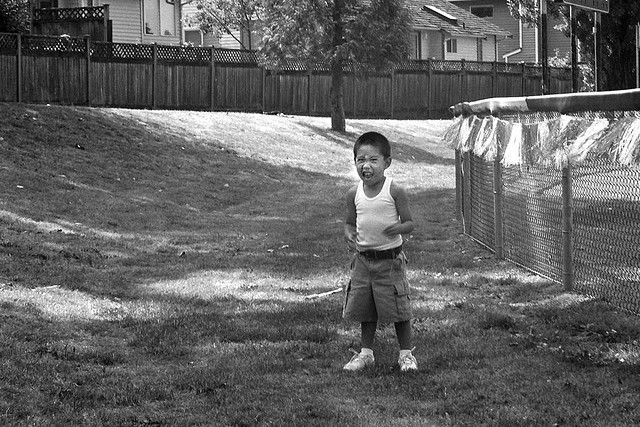Conduct Disorder: When Does A Child's Tantrum Signal Future Antisocial Behavior?

All preschoolers act out, so what makes one meltdown ‘normal’ and another not? In a new study, researchers at Washington University School of Medicine provide some concrete answers. While it’s normal for a young child to be disruptive and throw tantrums, the researchers say especially intense or prolonged behavior may be signs of a conduct disorder, which plagues one in every 20 children.
“That's about one child per preschool class,” Dr. Ji Su Hong, first author of the study and now a mental health provider at Grace Hill Health Centers, stated in a press release. “And conduct disorder is a serious problem when it affects a child under 10 because early-onset problems are more likely to persist as the child grows up.”
So what is a conduct disorder precisely?
First and foremost it is “characterized by spiteful and vindictive behavior — a real persistence of anger and aggression — an inability to really experience empathy, disruptive behavior that really borders on antisocial,” Dr. Joan L. Luby, professor of child psychiatry and senior investigator, told Washington University BioMed Radio. “And many people believe it leads to antisocial behavior in adults.”
A crucial warning sign of this condition is destruction or violence that is deliberate. Cruelty and callous disregard for others are part of it, too.
“If their disruptive behavior becomes aggressive to people and animals at a high intensity… and if there’s destruction of property or things like deceitfulness and stealing, these are serious markers that go outside the bounds of what is typical disruptive preschool behavior,” Luby told BioMed Radio. Seeing such signs, a mom should ask her pediatrician for a referral to a psychiatrist.
Early Treatment
When creating their “laundry list” of symptoms, Luby and her co-researchers found that intensity is the key factor when distinguishing normal behavior from disordered behavior. “Just how high pitched it get — how angry the anger is — so the severity of the symptom, in addition to the frequency, how frequently the behavior occurs, and also in a number of different contexts,” Luby told BioMed Radio. In the study, nearly 57 percent of the children with conduct disorder came from either single-parent homes or did not live with either parent. About half the children had a history of abuse or neglect and more than half had been diagnosed with preschool depression. And, many were from homes with low incomes, almost half from families with incomes at or below $20,000 a year.
The researchers noted some overlap exists between healthy kids and those with a conduct disorder. However, they say the best chance for a child with conduct disorder is early diagnosis and treatment.
Source: Hong JS, Tillman R, Luby JL. Disruptive behavior in preschool children: distinguishing normal misbehavior from markers of current and later childhood conduct disorder. Pediatrics. 2015.



























